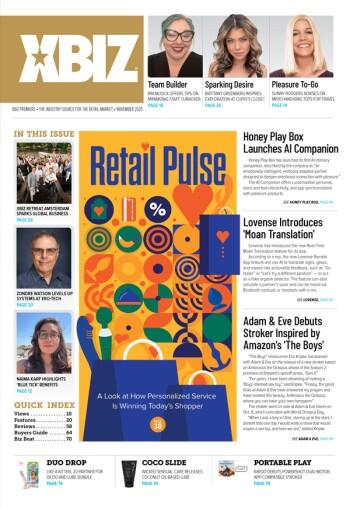This may shock you, but modern digital advertising networks (JuicyAds included) don’t really sell “advertising.” Say what?
At its core, advertising is about one thing only — creating want and desire. While advertising networks do this, that’s not really how affiliates, media buyers and advertisers use them.
The way advertisers use our services and other services is all about engagement and direct results, with most clients completely disregarding the overall marketing effect on the bottom line.
Gone are the days of “Mad Men” where creative and mass marketing was about selling an idea and air. Solid strategy and a good message could indeed bump sales and revenue (in measurable ways) but these marketing efforts do not exist in a vacuum. They worked with the metrics and measurements that were available at the time. But things are changing quickly.
In 2016, traditional TV advertising spend, according to eMarketer, was at approximately $71.3 billion domestically. This was surpassed by digital advertising at $72.5 billion.
This comes as no surprise with the TV market becoming fragmented between traditional TV, cable, and the “Netflix” effect with streaming options that are changing watching behaviors at their core. Who ever thought we would be “binge” watching TV shows? It goes against the entire business model of marketing TV shows to “tune in next week ....”
It’s been revealed recently that there is a drop in the use of #hashtags by large advertisers. Much like promotional codes and specially-developed websites for specific marketing efforts, hashtags were often used in an effort to try to measure engagement and to create a conversation with consumers.
Unfortunately, these companies have also found that it’s impossible to control that conversation. Instead, efforts are once again being pushed towards environments and websites where these companies control what you see and hear. Marketing by twitter hashtag is #dying.
National brands with big marketing budgets spend a lot of money on “branding” advertising. This creates demand and want across the entire population. Billboards, TV, radio, newspapers, flyers all work together to make you “want” things. It crafts the way you see brands and the way you “want” the new iPhone because you either identify with what the brand stands for, or because all your friends have it.
In our marketing division here at JuicyAds, I recently declined to build a strategy for an up-and-coming energy drink company because they didn’t have anywhere close to the necessary budget to create the amount of demand for the product to even take a fraction of a percentage point away from competitors. We don’t even see a lot of this type of advertising in the adult industry.
Very few companies focus on widespread marketing to become brands that dominate the industry. Instead, the focus is on affiliates and direct advertising, relying on direct results from those advertising spends in order to warrant additional spending.
“Advertising” is not what is being sold today. “Engagement” is what is being sold here at The Sexy Advertising network. The way advertisers use our services and other services is all about engagement and direct results, with most clients completely disregarding the overall marketing effect on the bottom line.
This is the way affiliates have to operate, but it’s not the way large direct advertisers should operate — but they often do. This is a mistake. No brand exists in a vacuum. Like it or not, affiliates have a big effect on the type-in and direct revenue of the brands they promote (it's impossible not to) but that’s why they are paid so handsomely for the sales that are generated by the affiliate.
Make no mistake about it, advertising reach in adult is huge. Billions of impressions flow through our network each month alone, but the “Mad Men” of days past knew that there were two effects at play — micro and macro.
Macro effects are the overall slow-moving and hard-to-measure effects on sales that can boost or tank revenues without having any way to directly link them to a specific effort.
Micro effects for a specific campaign work when consumers respond to a specific effort or specific campaign (like a specific item on sale, or a fresh product just released). This is where most of the focus lies today, and it means advertisers are making mistakes in their spend by not monitoring the larger-scale, longer-trending Macro effects of their branding and marketing.
At JuicyAds we believe in measuring everything possible, and that means using things like our recently added S2S postbacks to get hard data from specific advertising campaigns. Beyond this, our managed clients receive the benefit of our dedicated account managers working with the overall numbers to measure the larger overall effects.
Here’s a mind-bending thought for you to show how macro and micro are both important: Let’s say you’re buying popunders from our network across thousands of websites. Your campaign has some large sources that appear to be doing quite well. So, in order to capitalize your ROI you cut everything else that is not producing as well.
Your sales could then drop (in theory) because those large sites may simply have been first to cookie the surfer with multiple pops and caused the surfer to close the window quickly (killing the chance for a sale).
Meanwhile, it was actually other smaller websites on subsequent views that were convincing the surfer to sign up or buy, even though the large sites would reflect in the data as being the source of the sale. The macro-layer shows it all but the micro-layer may not tell the whole story and could actually “lie” to you.
We love data-driven decisions, and we love that we are able to give our clients more value by being able to directly measure engagement. However, its important and vital to understand that it’s possible to over-optimize and kill a campaign by being too strict in the pursuit of bigger profits.
Advertising your brand does not exist in a vacuum, and there’s a sweet spot in everything. Everything you do in marketing should consider both the big picture effects and the specific campaign, not one or the other.
Juicy Jay is the CEO and founder of JuicyAds, the Sexy Advertising Network. You can follow Jay on Twitter @juicyads, visit JuicyAds.com, or like on Facebook.com/juicyads.







